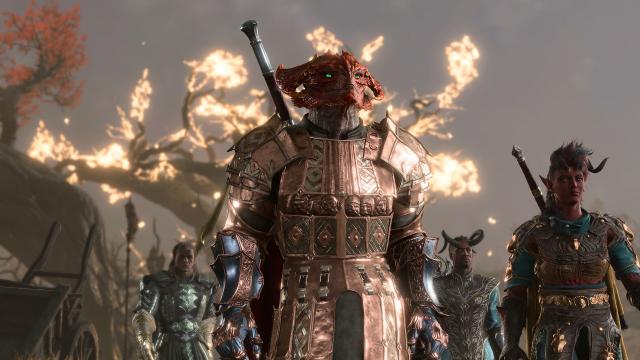Dungeons & Dragons might be bigger than ever, but the release of Baldur’s Gate 3 has catapulted the fantasy world and mechanics of the world’s biggest TTRPG into the hands of a whole eager new audience of players looking to gather a party and venture forth. If BG3 is your first proper encounter with D&D, it throws a lot at you: here’s a handy guide to some details about its world and systems if you’re lost.
What Even Is Baldur’s Gate?
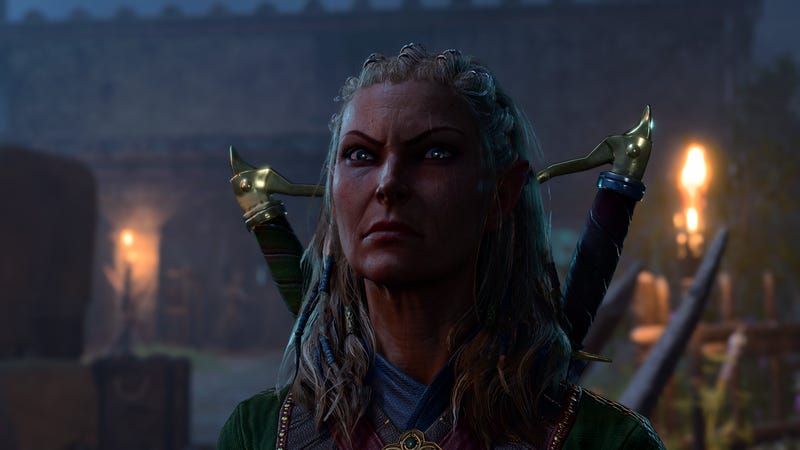
Developed by BioWare—best known these days for its work on games like Mass Effect and Dragon Age—and first released in 1998, Baldur’s Gate was a roleplaying game for PC that largely revolutionized the state of the CRPG (or Computer RPG) when it launched to critical acclaim. Adapting the ruleset of Advanced Dungeons & Dragons’ second edition for use in a video game setting, the game followed a player avatar who finds themselves thrust into adventure in D&D’s Forgotten Realms setting, and mysteriously linked to the Lord of Murder Bhaal—the god of murder and violence.
It spawned a sequel two years later in Baldur’s Gate II: Shadows of Amn, and inspired a whole wave of similar fantasy RPGs in the video game space, from similar adaptations such as Icewind Dale and Neverwinter Nights to more modern takes on the classic form, in games like Pillars of Eternity or games like Larian Studios’ own Divinity: Original Sin series. Now, two decades later and after six years of development, we have the third game in the series, and already one of 2023’s most successful video games.
Oh, you meant the place?
Okay But What Is Baldur’s Gate, the Place?

Baldur’s Gate is a city on the Sword Coast—a region along the west coast of Faerûn, a continent itself part of the Forgotten Realms, one of Dungeons & Dragons’ oldest and most-explored settings. South of one of the other major city states in Faerûn’s north, Waterdeep, Baldur’s Gate is known as a mercantile hub, a neutral city of commerce that made it not just a popular center for trade across the continent, but a home base for the many adventurers looking to find their way in the region. Its importance not just along the Sword Coast but to Faerûn at large has made the Gate a nexus point for some major conflicts over the years, from political squabbles to control the city to the iron crisis that drove the first Baldur’s Gate game, to the machinations of the gods and other supernatural planes of the Forgotten Realms themselves.
What’s the Deal With These Mindflayers?
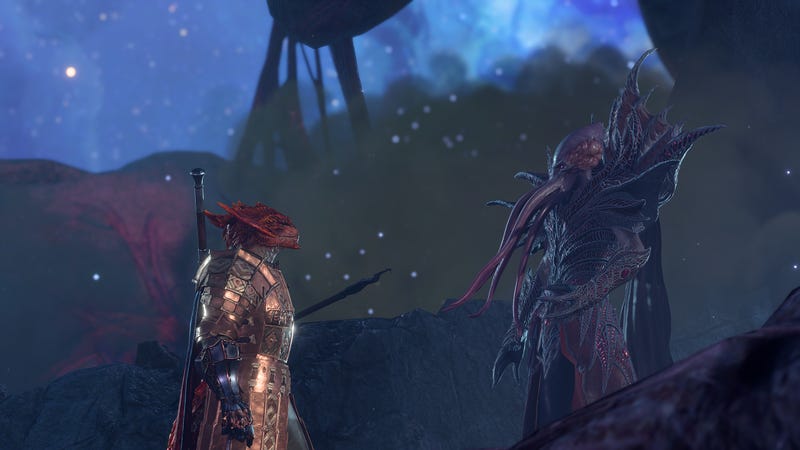
Illithids, or Mindflayers, have been part of Dungeons & Dragons since the very first edition of the game, and have long been a major antagonistic race. Hailing from the Astral Plane beyond as well as the Underdark itself, Illithids are psionic, tentacle-headed creatures who seek to physically dominate their foes, harvesting the brains of enemies for sustenance and to turn into minions, or—as is the driving plot of Baldur’s Gate 3‘s opening—capturing beings from other races to sustain their own, transforming them through a process called ceremorphosis, where an Illithid tadpole is burrowed into a host’s brain, turning them into a thrall and then a Mindflayer themselves.
Just like in Baldur’s Gate 3, the Illithids have a longstanding beef with the Githyanki in Dungeons & Dragons lore. A race formerly enslaved by the Illithids for generations, the Githyanki eventually built up mental resistances and psionic abilities of their own, leading to a revolution that toppled the Illithid’s empire in the Astral Plane. Ever since, the Gith have traveled the other planes seeking to stop the Illithids from ever trying to rise to such a height again.
Where (and When) Is Baldur’s Gate 3 Actually Set in D&D?
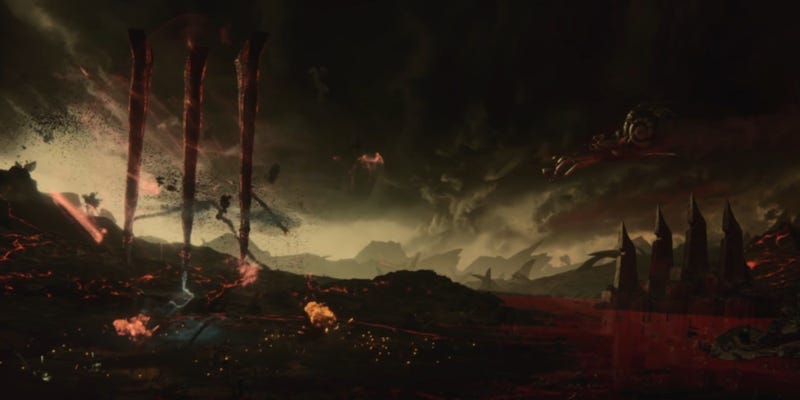
Baldur’s Gate 3 is set in the year 1492 DR, or Dalereckoning, one of the most common calendars in Faerûn. That places it around 120 years after the events of Baldur’s Gate II, and in the relative current time of Dungeons & Dragons’ 5th edition timeline. An event referenced frequently throughout Baldur’s Gate 3 with direct connections to 5th edition is the recent fall of the city of Elturel into the first layer of the Nine Hells, Avernus, as part of a plot by Avernus’ mistress, the archdevil Zariel.
These events take place during the 5th Edition campaign book Descent into Avernus, and while that campaign can end in myriad ways in the tabletop game, Baldur’s Gate 3 is set with the assumption that Elturel was saved from its translocation into Avernus and returned to its place further into the heartlands beyond the Sword Coast.
Are the Cult of the Absolute a Thing in Dungeons & Dragons?
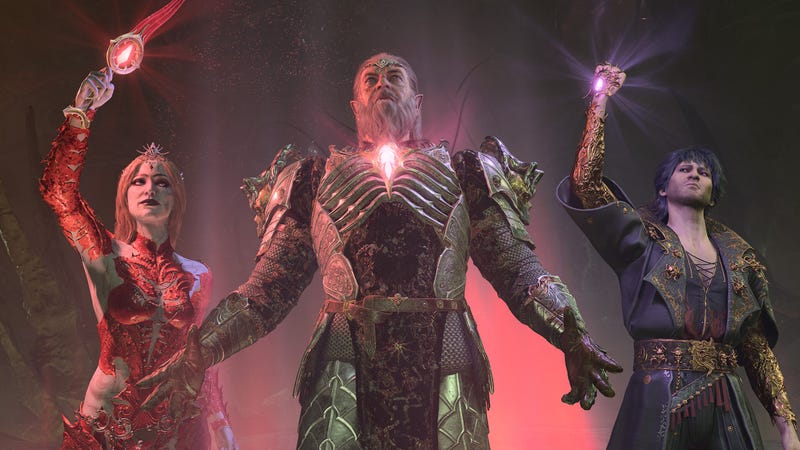
The primary villainous faction of Baldur’s Gate 3 is the Cult of the Absolute, a mysterious new religion that acts as a seeming front for the Illithids, using modified tadpoles to convert followers into “True Souls” and lead an uprising on the Sword Coast in the name of the mysterious god and its triumvirate of chosen avatars. While the true nature of the Cult and its machinations are a bit too spoilery to get into here, there are ties to some well established Dungeons & Dragons lore and the history of the Baldur’s Gate series itself—but otherwise, they are an entirely new creation made for Baldur’s Gate 3.
Although they were teased in the IDW Dungeons & Dragons comic Mindbreaker, which acts as a prequel to the game, there’s always a chance future content for the tabletop RPG could tap into the plotline in an attempt to bring Baldur’s Gate 3 fans to the game itself.
How Much of D&D Is Actually in Baldur’s Gate 3?

Speaking of: it’d be a relatively easy transition, considering the bulk of Baldur’s Gate 3‘s mechanical systems are taken right from the current 5th edition of Dungeons & Dragons. Largely focused on the base player races and classes of 5th Edition’s Player’s Handbook, Baldur’s Gate 3 is, broadly, systematically very close to the tabletop game.
Some things have changed—obviously, without a DM the act of playing Baldur’s Gate 3 is very different to playing Dungeons & Dragons, and a lot of the dice rolling you’d do on the tabletop is automated for you in Baldur’s Gate 3‘s combat and narrative elements. Larian also took the opportunity to make some quality of life changes to some of 5th Edition’s systems—characters don’t need prerequisite stats to multiclass in Baldur’s Gate 3, for example—and in particular some of its subclasses. But otherwise it is about as close to a video game version of Dungeons & Dragons as you’re going to get without playing D&D itself through a Virtual Tabletop system.
We’ve largely focused on narrative elements so far—so speaking of mechanics, let’s break down a few of the key D&D systems that are important to Baldur’s Gate 3, if a little confusing to newcomers…
What the Hell Is a Cantrip?
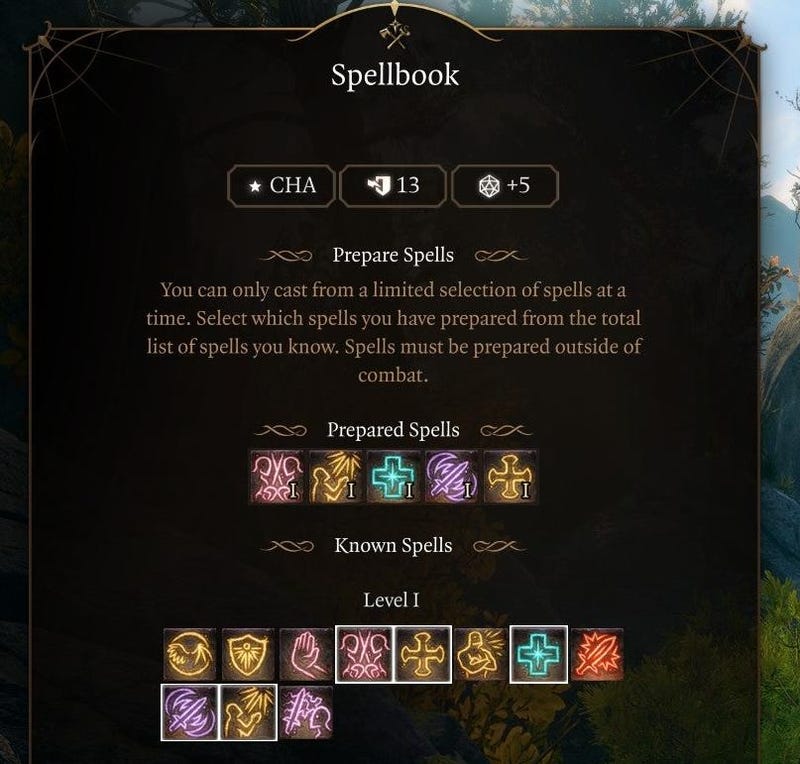
The magic system in Dungeons & Dragons is derived around various levels of spells, rather than the typical sorts of mana systems you might expect in a video game. The more powerful the ability, the higher the spell level, up to nine in the TTRPG—but they’re also restricted by the number of spell slots a caster has. You might only be able to cast a couple of higher-level spells compared to lower-level ones, or you can empower certain lower-level spells by “upcasting” them at the cost of using one of those higher-level-specific spell slots.
But there’s a certain class of spell that doesn’t require using one of your spell slots: cantrips, which can still be cast even when your character is out of spell slots. That usually comes at the cost of the fact that cantrips are pretty basic abilities, and far from the most powerful or damaging magic in your toolkit. Don’t count them out though, because they can still be useful and dangerous in the right hands, like our dear friend Eldritch Blast.
What’s the Difference Between a Short Rest and a Long Rest?

D&D characters recover everything from spell slots for caster classes to ability charges and other limited skills for martial classes, as well as hit points, during rest periods. In the TTRPG, this also narratively acts as the passage of time—long rests are usually overnight chances for a party to eat, sleep, and perform menial work outside of the usual constraints of their adventuring, and players can’t gain the benefits of taking a long rest more than once every 24 hours. During this time they will recover all of their health, most caster classes will recover all of their spent spell slots, and characters will also recover any spent hit dice they used during short rests. Short rests, meanwhile, are about the equivalent of an hour’s break, and while there’s no specific hard limit on the number of short rests you can take in D&D, you typically don’t take more than a few between long rests. Certain classes will recover ability or weapon skill charges during a short rest—Warlocks recover their spell slots on short rests, for example—but they’re largely used for players to spend the aforementioned hit die in their pool to regain some or all of their hit points.
All this also applies in Baldur’s Gate 3, with some more specific caveats. You can only take up to a maximum of two short rests between long rests, and in order to perform a long rest, you need enough camp supplies—in the form of food and drink—to get its full recovery benefits. You can perform a partial rest, which recovers some of your hit points and spell slots but not all of them, and doesn’t refresh your short rests either.
What’s a Perception Check? How Is It Different From Other Ability Checks?

As you’ve been playing Baldur’s Gate 3, you’ve probably noticed while traversing an area occasionally your characters will have a small D20 animation play above their heads, the announcement of whether or not they’ve passed a perception check. Players can take a perception check at any time in Dungeons & Dragons, but they’re automated in Baldur’s Gate 3. As the name implies, they’re used to judge whether or not your character perceives something in the world around them—an enemy ambush, an armed trap, a secret passageway, a conversation overheard through a door. These tests are taken against your character’s Wisdom stat.
Perception checks are largely passive in Baldur’s Gate 3, as are their social counterparts, insight checks (Perception deals with inanimate things and the world around you, insight deals with reading someone’s intent); they occur in the background instead of being something you actively select to do as you would for something like trying to persuade someone in a conversation, or recalling arcane, religious, or historical knowledge. It’s largely similar in Dungeons & Dragons: a DM might invite you to make a passive perception check during a session, or a player might choose to make an active perception check that will often be easier to pass. Just like Baldur’s Gate 3 though, whether you pass or fail you know there’s something out there just by the existence of the check!
Are Spells Important Outside of Combat?
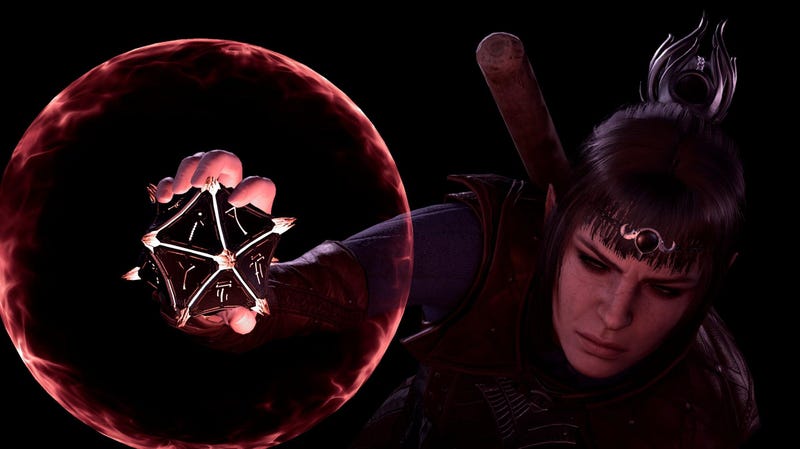
In video games magic spells are more often than not largely specific to combat—even not-deliberately damage-dealing ones like buffs or debuffs. In Baldur’s Gate 3 and D&D alike, that’s not the case. There’s a litany of useful spells to use when you’re outside of the confines of combat, from traversal spells like Misty Step or more narrative-based magics like speaking to the dead or to animals, or a common Baldur’s Gate 3 staple in something like Guidance—which grants you a bonus to any ability check roll you make. A lot, but not every, spell you cast outside of combat will be a cantrip, so you can use them whenever you want. Experiment! Have fun! They’re tools in your roleplaying arsenal, whether you’re playing Baldur’s Gate 3 or D&D.
Is There Anything Else Like This, Other Than… Dungeons & Dragons?

This is a broader question than just how Baldur’s Gate 3 relates to Dungeons & Dragons as a game. But if you’re really enjoying the experience and want to try something similar, whether it’s a video game or a TTRPG, there’s plenty of options out there. If you like the mechanical strategy of BG3, something like Obsidian’s Pillars of Eternity—a more modern take on the style of Isometric CRPG that the first two Baldur’s Gate games revolutionized—or Larian’s own original fantasy series Divinity: Original Sin and its sequel have plenty of elements in common with BG3 (especially Original Sin and its sequel). If you like the narrative tone and conversational style, BioWare’s own Dragon Age games, especially the original, and the focus on choices and consequences, offer something more streamlined but still in similar spirit.
On the tabletop, there is of course a veritable bounty of RPG choices beyond playing D&D itself, although naturally Baldur’s Gate 3 will familiarize you most with the mechanical jargon of Dungeons & Dragons itself. Why not take a look at some of our favourite games of 2022 for recommendations, or check out our regular Gaming Shelf column for news and info on some of the most interesting TTRPGs around and beyond the Forgotten Realms.
